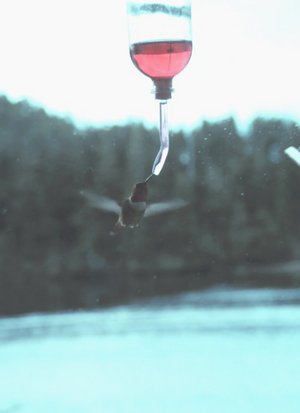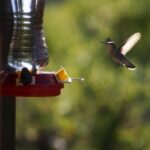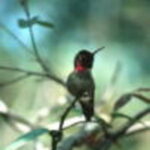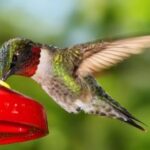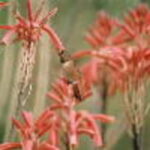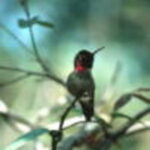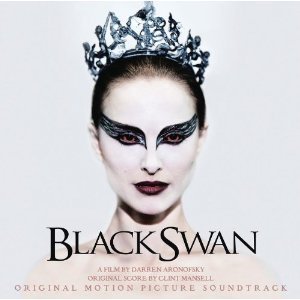For hummingbird enthusiasts in Idaho, there is good news. There are at least five species that have been documented in Idaho. These are Anna’s Hummingbird, Broad-billed Hummingbird, Broad-tailed Hummingbird, Calliope Hummingbird, and Rufous Hummingbird. With a little luck and a carefully placed feeder or hummingbird garden, the hummingbirds that visit Idaho can be enjoyed and even identified.
If an Idaho hummingbird enthusiast has decided that they would like to get to know the beautiful, little birds buzzing around their property, they can begin with learning to identify them. After they have been identified, then the rest of the research can begin. Identification of hummingbirds is often easier in one sex or the other because one sex is generally more colorful than the other is, in most cases, the male.
Identifying the Anna’s Hummingbird can begin by looking at the size of the hummingbird in question. The Anna’s Hummingbird is one of the largest hummingbirds with males weighing in the neighborhood of 4.3g. Other than their size, the male Anna’s Hummingbird has a breast that is gray, a throat and crown that are dark, rosy-red and a back that is metallic green. The female Anna’s Hummingbird has a breast that is lighter gray than that of the male, a back that is green, a throat that is white with red spots and tail feathers that are white tipped. Another characteristic of the Anna’s Hummingbird is that it has a song. Most hummingbirds do not.
Identifying the Broad-billed Hummingbird is easier with the male than with the female. The male will weigh around 3.7g and has a throat that is covered in bright metallic blue feathers, a bill that is orange-red with a black tip and a back, crown and breast that are dark green. The female Broad-billed Hummingbird is smaller than the male, usually weighing about 3.4g; it has a throat that is gray, as is its breast, a bill that is red-orange and white-tipped tail feathers.
Identifying the Broad-tailed Hummingbird can be easy if the hummingbird is a male and it is flying because these birds make a sound similar to a cricket when it is flying. Other than this sound, the male can be identified by its back and crown being metallic green, its breast being white, its throat being rosy colored and its tail, which is rounded. The female Broad-tailed Hummingbird has a back and crown that are green, a throat that is white with black spots, sides that are rusty colored and tail feathers that are green, rust and black and they have white tips.
Identifying the Calliope Hummingbird can also begin with the size of the hummingbird. The male Calliope Hummingbird is the smallest hummingbird in Idaho, weighing about 2.5g. Other than its size, the male Calliope Hummingbird has another characteristic that can be identifiable other than its size. It is the “whiskered” effect that purple feathers cause in the midst of the white feathers covering its throat. The male also has a back and crown that are metallic green. The female Calliope Hummingbird is also small, like its male counterpart. It weighs about 2.8g, making it the smallest female hummingbird that visits Idaho. The female also has a back and crown that are green, but not metallic green, it also has a throat that is white with dark stripes, sides that are buff and tail feathers that are white tipped.
Identifying the Rufous Hummingbird is just like the other species of hummingbirds in Idaho. The male is easier to identify than the female. The male has non-iridescent crown, tail and sides, backs that are rufous, green or a combination of rufous and green. It also has a bright red-orange throat and a white breast. The female has a back and crown that are green, a breast that is white, a throat that is streaked and tail feathers that are rufous with white tips.
Attracting hummingbirds to a garden takes some planning. The garden has to have flowers that the hummingbirds prefer. This would include Bee Balm, Bleeding Heart, Bugleweed, Butterfly Weed, Bellflower, Cardinal Flower, Columbine, Delphinium, Foxglove, Lupine and Red Hot Poker.
